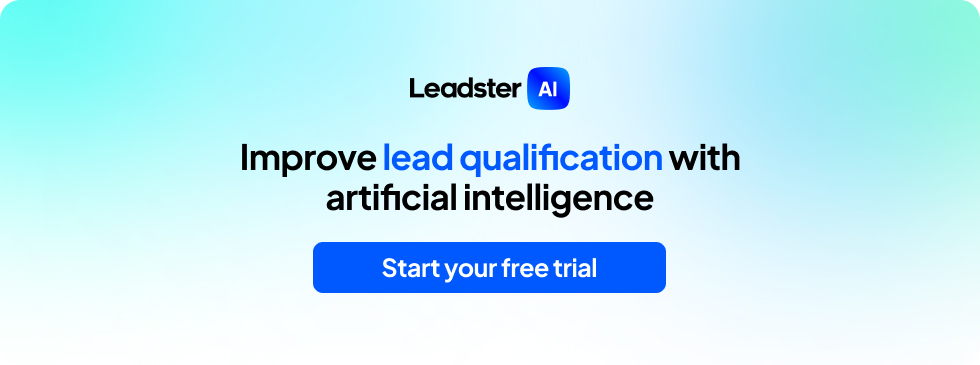What is Dwell Time and How to Increase It
Dwell time indicates how long your visitors spend on a particular page of your site.
This metric is extremely important in any digital marketing effort, within any methodology, and in absolutely any circumstance.
Of course, there are other metrics that overlap and say more about your business goals than reading time — for example, your conversion rate.
But at the same time, dwell time is the first step to understanding how your visitors behave.
Let’s talk more about this throughout today’s article.
Let’s discuss what dwell time on a page is, how it relates to other metrics, and how to improve this crucial indicator.
Shall we?
What is the dwell time on a website page?

The dwell time on a page, which Google Analytics 4 calls average engagement time, is a metric that indicates how long, on average, people spent on a particular page of your site.
Opening Google Analytics, this is the fourth column in all reports. See the screenshot below:
This metric is displayed in minutes and seconds, and it is individual for each page of your site.
You can also find the overall reading time of your site through Analytics. In fact, this is one of the first pieces of information displayed on your real-time dashboard, on the home page of the platform.

Basically, the reading time on your page is a way to measure how much your site’s CTAs are being exposed to your visitor.
For example, in this article, our chatbot on the side.
The reading rate indicates how long the readers of this article — in this case, you — are exposed to the offer the chatbot provides.
In the end, this counts towards your CRO work — Conversion Rate Optimization.
So, it’s not that reading time in marketing is the most important metric you will analyze. It’s not. But all other metrics assume that your visitors are spending time on your site.
How long exactly? Reading time will determine that.
🇬 Straight from Google: [GA4] Engagement overview report
But just to clarify: are dwell time and reading time really the same thing?
Let’s discuss this in the next section. Follow me:
Are dwell time and bounce rate related?
The bounce rate is a very interesting metric to analyze along with the dwell time on the page.
It is through it that you can understand how many people are leaving your site without visiting any other page.
The relationship between these two metrics is more interesting than you might imagine. They are practically inseparable.
The bounce rate is what will indicate whether dwell time was measured or not.
If you enter any website’s page at this moment, for example, and spend 10 minutes reading an article, Google will not automatically record this time.
In fact, for the count to be made, you will need to perform some action on the site. If you do nothing, you are counted within the bounce rate metric.
That’s why it’s called “bounce rate.” It’s not your visitor rejecting your site 😅 It’s Google rejecting the data generated since there was no other interaction besides reading.
Google Analytics counts reading time based on hits. The first hit was what brought your visitor to that page.
The dwell time on the page is the time difference between the first hit and the last, i.e., what took the visitor to another page still within your site.
If the last (and only) hit is what’s taking your visitor off your site, your dwell time is not counted.
Is dwell time a vanity metric?
We have an article here on the blog that talks a lot about vanity metrics, a term that, to be honest, we don’t like to use very much.
You can access it below via the link. But we will also give a brief summary of what we’re talking about in it.
In this article, our main argument is that vanity metrics do not exist.
What does exist, in fact, is the vanity of thinking that a metric not suitable for a situation will explain it perfectly.
For example: the number of followers on Instagram does not indicate the success of the brand. But it indicates that it is being searched on social networks.
The case of dwell time on the page is similar. This is a metric with potential to be seen as vanity, but it all depends on the analysis you will make with it.
Let’s discuss this better in the items below. Follow me:
“Yes, it’s a vanity metric!”
There are arguments that say dwell time on the page, or reading time, is a vanity metric. All of them are anchored in lead generation and conversion.
The main argument is that it doesn’t matter to have a great dwell time on the page if visitors are not converting into leads.
And this is a big argument, which makes perfect sense.
Dwell time becomes vanity when you forget its main function: showing how embedded visitors are to your conversion opportunities.
Reading time does not indicate success in your actions, especially within content marketing.
In this work mode, having people reading your materials is very important. But the materials serve a purpose: generating leads and moving them further down the Marketing Funnel.
Just knowing how long people are spending on your articles tells you that your articles are of good quality. Great! But the work of digital marketing goes far beyond that.
“No, there are no vanity metrics!”
The biggest question is not even whether the engagement rate on the page is a vanity metric or not.
In fact, what is more important to understand is whether vanity metrics even exist.
Even in the argument in favor of the previous item, we can already see this point being raised.
Vanity metrics are so-called because they serve only to appease the vanity of those presenting them, often with the purpose of masking the lack of other more concise indicators.
But the point is that this is a wrong practice that really doesn’t contribute anything to marketing. It’s not the metrics’ fault. They all have their value.
With a high dwell time, you know that your conversion problem is not related to the content of the pages — after all, people are reading.
This is a minor metric, rarely analyzed in depth, because of this characteristic: it is part of the most basic digital marketing metrics, used to inform others, much more complex, and to guide the work methodology.
But this does not make it a vanity metric.

How to increase the dwell time of a user on your page?

Well, now that we’ve discussed everything that involves user dwell time — called engagement time in Google Analytics 4 — we also need to talk about how to increase this indicator.
This is a specific task. There are techniques and strategies that will work for the entire site. But in most cases, they need to be applied individually to categories or even page by page.
Increasing dwell time on the page is also a meticulous task. You will need to tweak, test, and always keep an eye on the results as they come in.
In the next items, we will discuss each point that will help you increase the reading time on your site, blog, product pages, contact pages, etc.
Shall we?
Mobile-first pages
This is a general point that can be applied to your entire site. In fact, by its very nature, this is an adjustment that needs to be applied to all pages.
Today, smartphone access is as common or even more common than computer access.
And we have the data to prove it: according to the Lead Generation Panorama 2024, mobile access leads by far — more than 60% of people who use the internet daily use smartphones.
See the chart:
This year, we even had an increase of more than 2% in mobile access, with an equal drop in Desktop access.
So, if your site is not mobile-first, that means you are making access and reading difficult for almost 70% of people who use the internet in Brazil.
This is the main point that determines the dwell time on the page, by the way.
Sites that are not mobile-first are entirely configured for the best possible display in computer browsers.
Images are in the ideal position for the computer screen, the amount of text is designed with these dimensions in mind, CTAs are positioned following this logic, etc.
And then, when someone takes a smartphone to access your site, you may encounter problems such as:
- Images that take a long time to load;
- Images in poor positions, hindering reading;
- Poorly configured paragraphs;
- General difficulty in reading;
- Videos in difficult positions to follow;
- Difficulty in finding sections;
- Difficulty in finding menus;
- CTAs out of the imagined position;
- Among other usability issues.
Mobile-first sites, however, do not cause the same problem on Desktops. In fact, they are configured first for mobile, but still with any experience, and on any screen, in mind.
The problem with sites that are not mobile-first is precisely this: they are configured for Desktop, ignoring all other screens.
In fact, many times these sites are designed only with laptop screens in mind, leaving larger monitors at the mercy of luck and front-end formatting gods.
Following the Core Web Vitals
The second point to consider is Google’s Core Web Vitals, the famous E-E-A-T — now, with a new E, called Double E-A-T.
The Core Web Vitals are Google’s determinations and are related to how easily your site will rank in the best positions on the SERP, and are generally associated with SEO work.
However, even having this main objective, the Core Web Vitals can also impact the reading time of the pages, as they are not technical, but related to what people expect to find on any site.
Before continuing, let’s better understand what each letter of the acronym means:
- E: Experience — the first letter E means experience, or how easy it is to navigate your site and find the necessary information. Wireframes, sitemaps, and good data architecture work to improve this aspect;
- E: Expertise — the second letter E is related to the content you present on the site. Who is writing? And why are you talking about this subject? Your brand, and the people who represent your brand, need expertise in what is being said. This directly impacts the next letter of the acronym;
- A: Authority — it is the authority of the page as a whole. The more experts in the content you bring to develop your content, the more authority your site conveys. It is also related to the number of backlinks you receive, events you participate in, and the recognition of your brand as a whole in the market it is inserted in;
- T: Trustworthiness — is how much your site conveys confidence in what it is saying. It is related to more abstract concepts, such as honesty in content production, transparency in the sales process, etc.
Having all these points resolved improves your positioning on Google, but also increases the reading time on the site.
This is because all of them are related to content and information transmission. The more you can convey these values in every line written on your site, the more recognition and engagement from users you will generate.
Interesting and interactive content
Another fundamental point to increase reading time in digital marketing is to produce good content.
There is no way to escape this. To keep your visitors on your page and ensure they move on to others, it is necessary to create content that speaks directly to your personas and your ICP.
This is basic, but not as easy as it sounds.
All content needs to be written by good writers and with a lot of research. No content should have the main purpose of “appearing well on Google.”
It should be created to really engage your audience, who should come away from reading with something new learned.
And the content also cannot be just text. It needs to be interactive in some way and always present opportunities for further exploration of the topic.
This can be done very simply by adding links throughout your text and other interactive resources, such as videos anywhere on your site.
But let’s discuss better some interactivity resources in the items below. Come with me:
Other user experience improvements
I made a quick list here for us to better understand some resources that will help you improve the user experience on your site and with your content.
Not all here will be simple to implement, but some really are.
In some cases, you will need to make changes to the entire site, including texts you already have published on your blog to generate leads.
But in other cases, this is not even necessary: just apply the changes from the new texts and pages you install on your site.
Let’s discuss these resources better in the items below. Come with me:
Estimated reading time at the top of the content
Reading on the internet is completely different from reading a book.
And this is interesting because many people use the same metric to measure both: attention.
And that’s where conclusions like “people don’t want to read anymore, they only spend 30 seconds on my article” come from.
It’s not quite like that. The issue is that reading on the internet is simply different. People want to read quickly, scanning the page, instead of a more intense and attentive reading.
When you put the estimated reading time at the top of the content, it’s easier for the reader to understand the length of the article.
And so, they plan better to read it throughout the day.
Possibility to listen to the narrated content
There are tools, like VOOZER, that transform any article into a mini-podcast on your site.
This helps in the case of very long articles, which demand a lot from people who are reading.
It’s important, in these cases, to always test the narration to ensure everything is in order.
For example: your CTAs need to be interesting considering people who are listening to the content above all.
They need to be interrupted in their other activities — browsing other tabs, for example — to receive the conversion opportunity you are offering.
The truth is that increasing reading time in marketing is a task closely related to good writing practices.
There is no adjustment you can make that is better than a well-informed writer creating the article for you.
This is the last and most essential tip: provide all the necessary research materials to the writers, and always keep an eye on the final result.
But tell me something: what are the conversion opportunities you allow on your site? What do you do with your visitors?
With Leadster, you have a chatbot specialized in automatically converting visitors into leads. All with a few adjustments in less than 10 minutes to install on your site.
Thanks for reading. See you in the next article.







